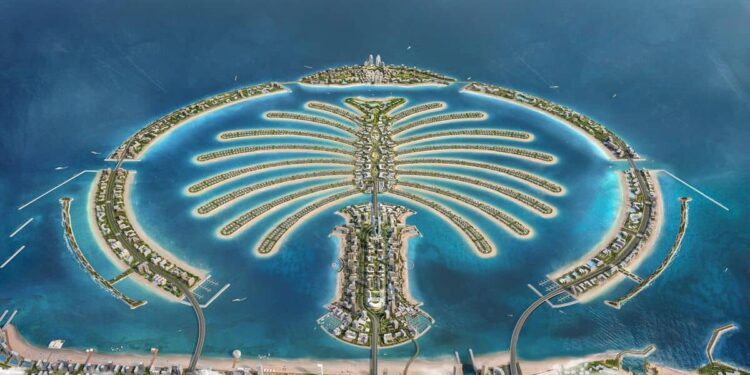According to the Lumina Cross-Border Insights 2024 report, NEOM, the ambitious high-tech mega-city of Saudi Arabia’s Vision 2030 plan, is expected to become a major driver of foreign direct investment (FDI) and UK to Middle East investment in 2024.
NEOM, which is expected to cost an incredible $500 billion, is currently in the process of building its first destination, Sindalah, which is expected to open its doors this year.
Beyond NEOM, Saudi Arabia is working on several other megaprojects with mixed development that are part of its diversification strategy.
Notable initiatives with the potential to change the country’s economic landscape include Diriyah, Jeddah Central, and Roshn.
Dubai’s Palm Jebel Ali, Creek Harbour Tower, and Metro Blue Line to drive FDI in 2024
Two historic megaprojects have been revived, indicating the resilience and vitality of the UAE property market.
With hotels, beaches, homes, and entertainment venues, Palm Jebel Ali is projected to be twice the size of Palm Jumeirah. Concurrently, work on the Tower at Creek Harbour is expected to start in the second half of 2024.
In the Middle East, infrastructure development is also a top priority. When it is finished, the King Salman International Airport in Riyadh will have six parallel runways and is expected to boost Saudi Arabia’s non-oil GDP by $7 billion annually.
The ambitious Aviation Strategy 2030 of the Kingdom, which also includes the Abha International Airport and the Red Sea International Airport, includes this airport.
The announcement of the 2023 Dubai Metro Blue Line has paved the way for a major infrastructure development in Dubai.
The $5 billion Blue Line is expected to be finished by 2029 and to carry 200,000 passengers every day by 2030, adding 14 new stations to the 154 that are already part of the network.
In the Middle East, the quest for renewable energy is gathering steam, as evidenced by the noteworthy projects that are emerging.
Based on the Independent Power Producer (IPP) model, the Mohammed bin Rashid Al Maktoum Solar Park is currently the biggest single-site solar park in the world.
It seeks to reach 5,000 MW of production capacity by 2030 and draw $13.6 billion in investments.
With the Shuaibah 2 Solar Facility expected to grow to be the biggest in the nation, Saudi Arabia is likewise making progress in the field of renewable energy.
With 2,060 MW of planned capacity, the plant should be able to supply electricity to about 350,000 homes.
The UK is paying close attention to and investing heavily in these ambitious projects in the Middle East that span a wide range of industries from technology to infrastructure and renewable energy.
There are many chances for the UK and the Middle East to work together productively as the region’s economies continue to diversify and embrace innovation.

